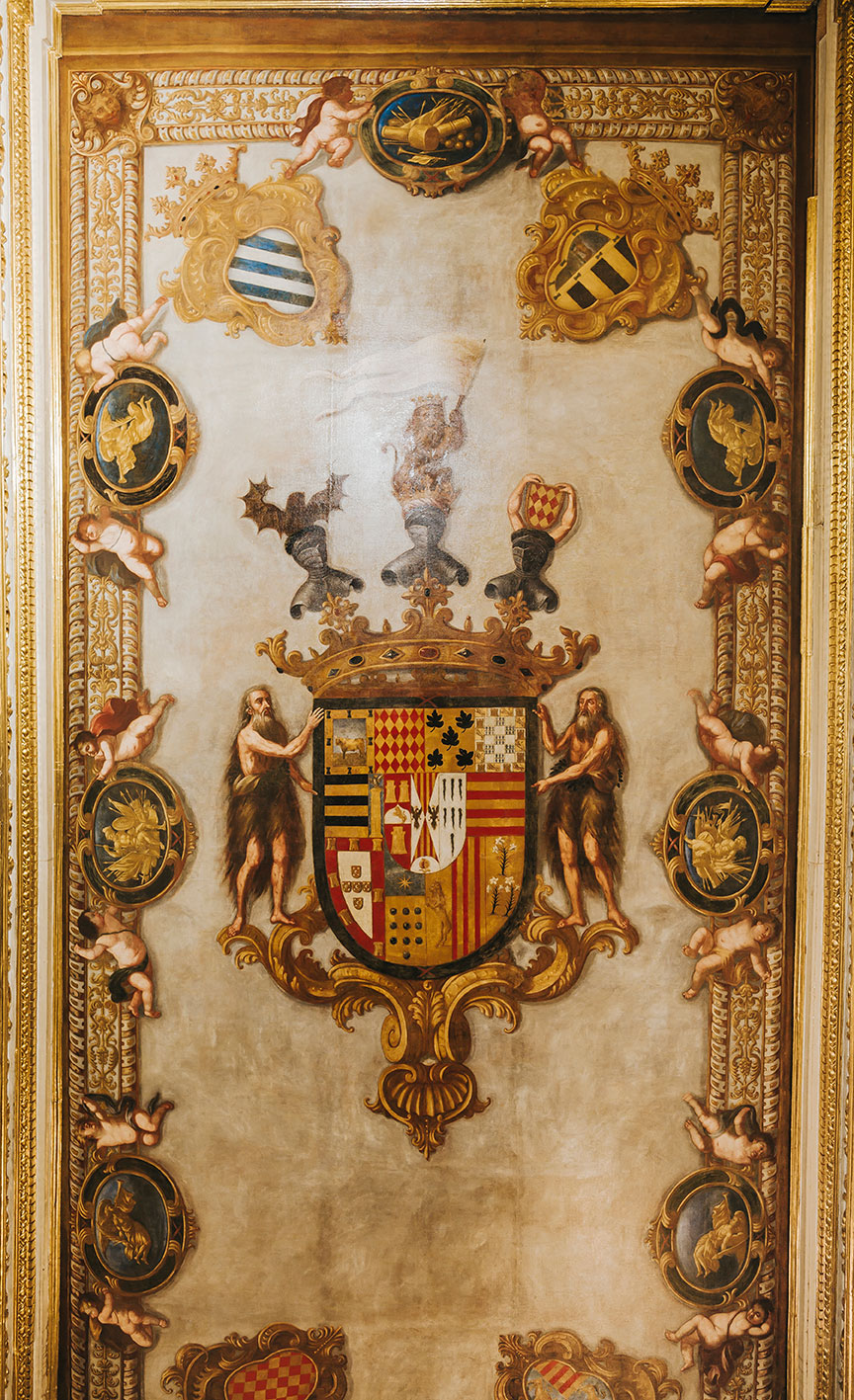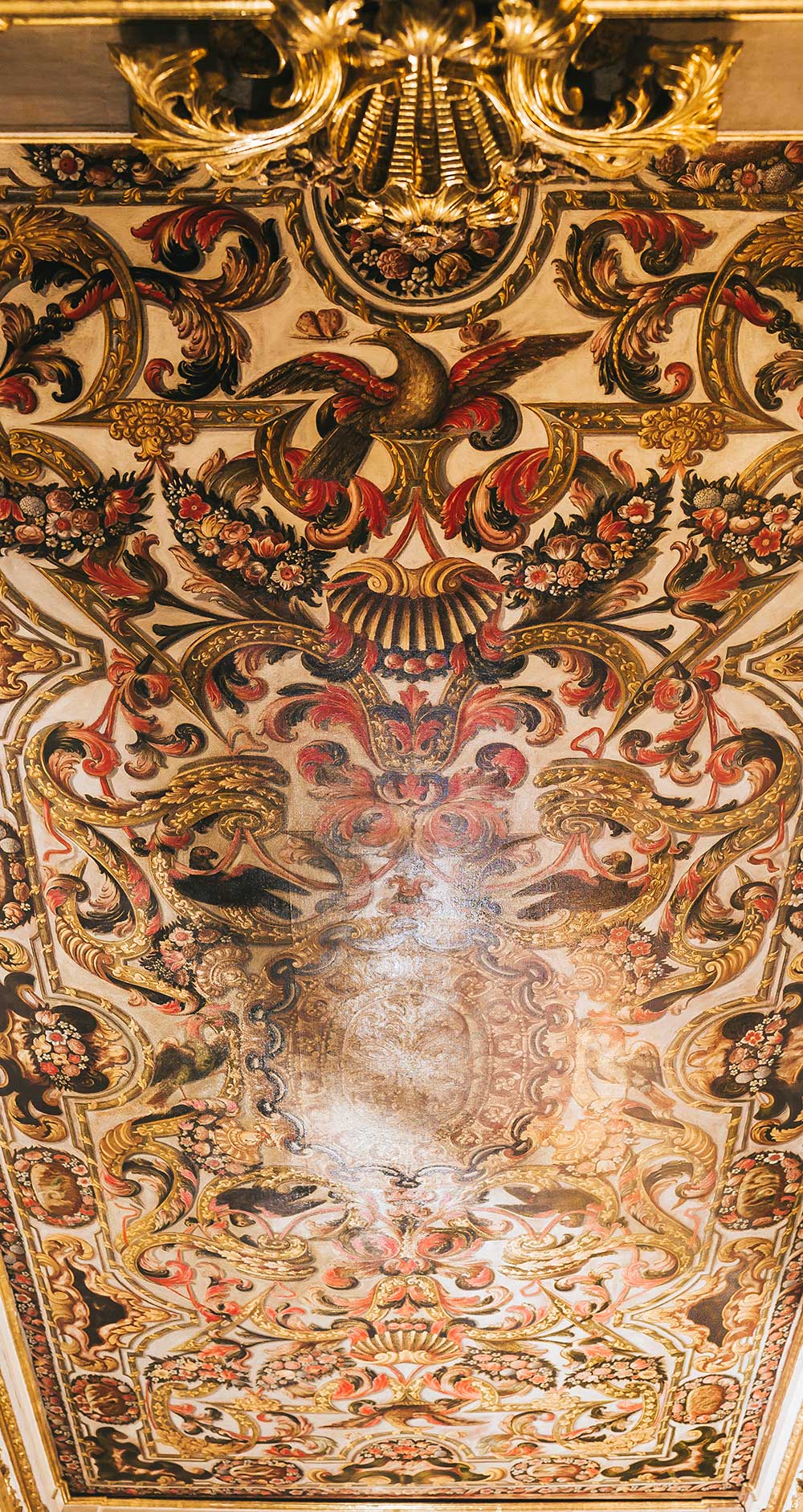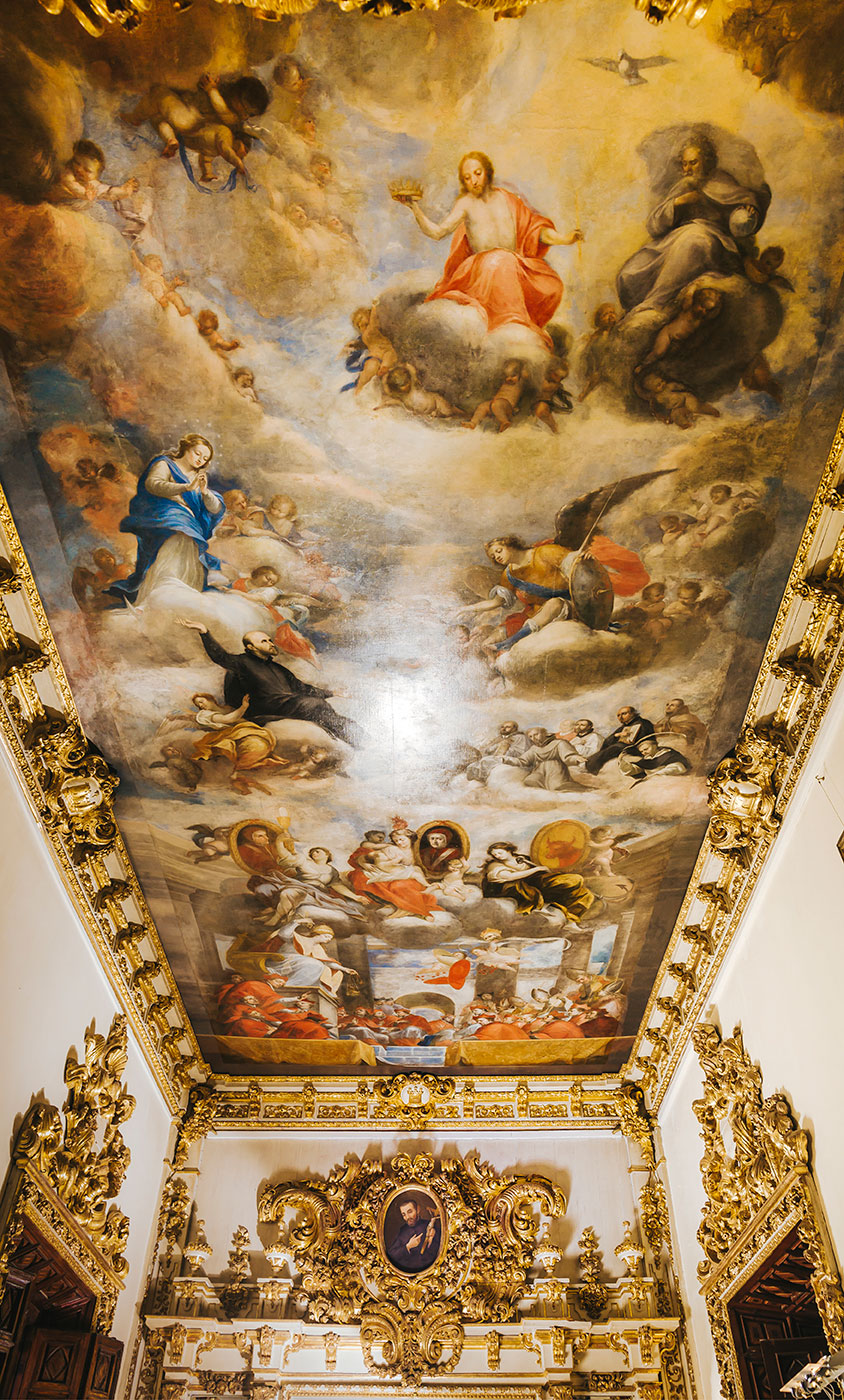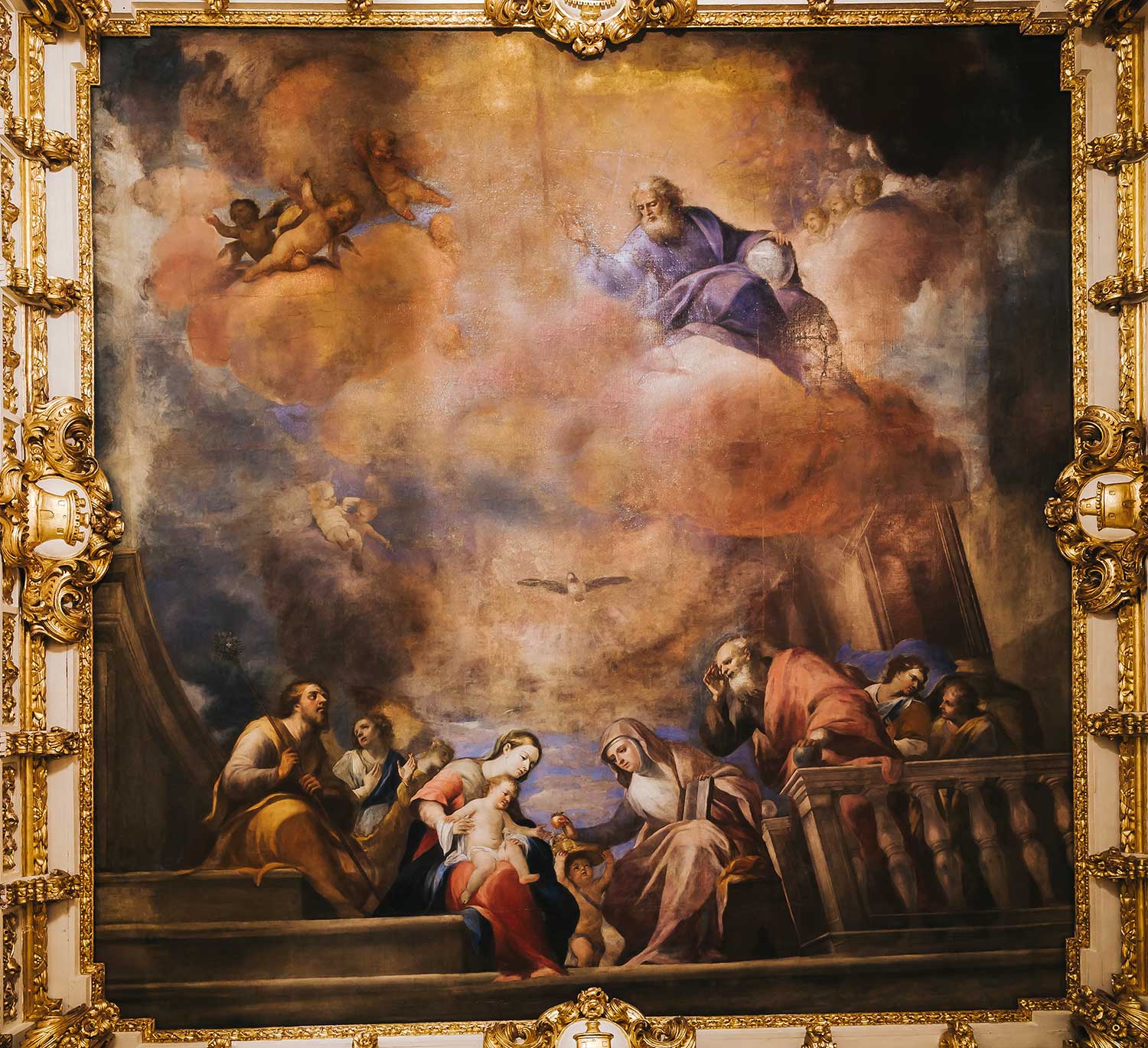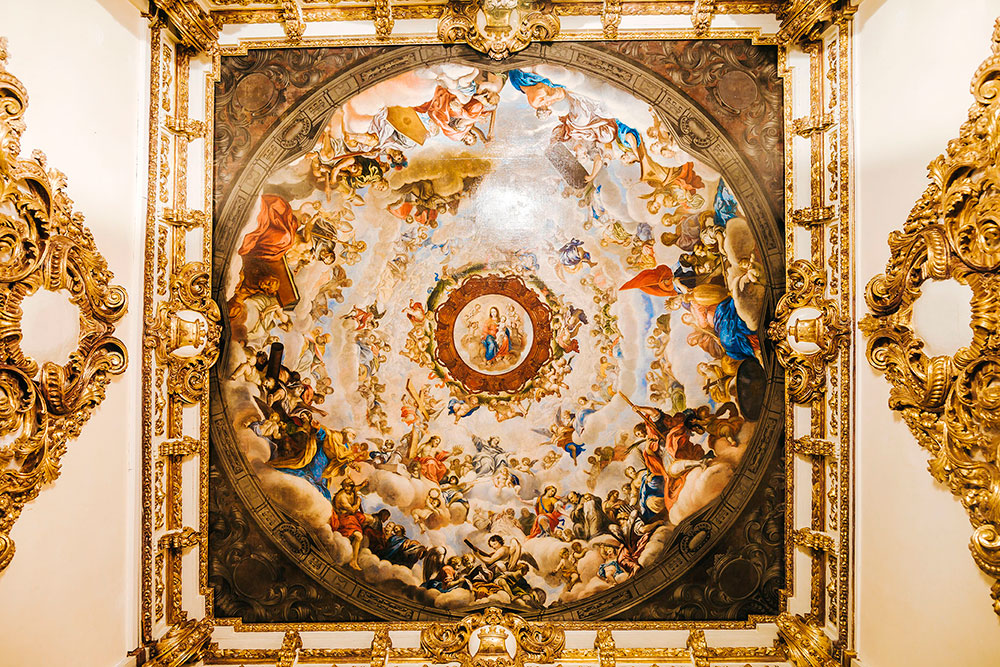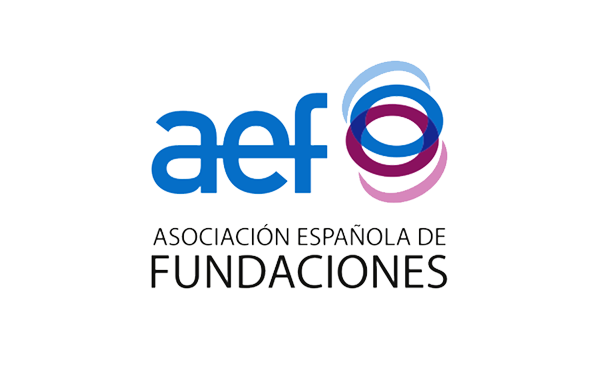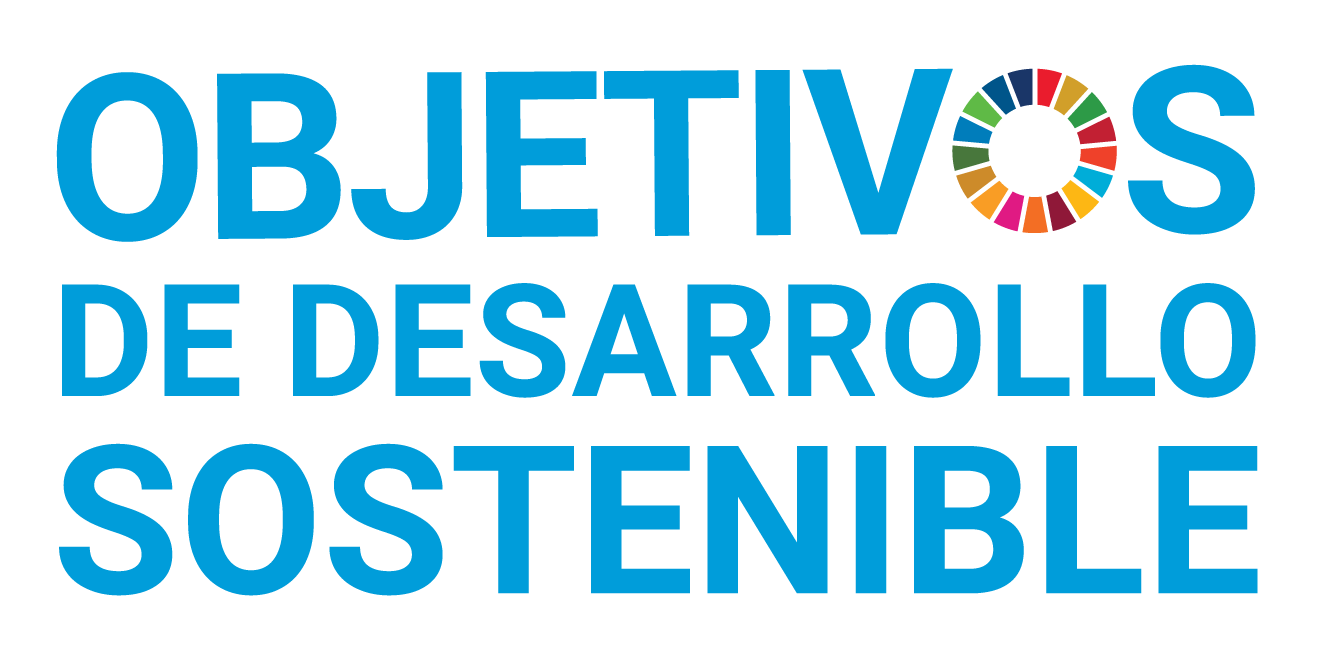CANVASES IN THE GOLDEN GALLERY
Due to their dimensions (the first three are 10x5m and the other two 5x5m), and to their complexity, this pictorial series is a milestone of the late Baroque period. Tradition has maintained the painter Gaspar de la Huerta as the author of these works, although recent studies point to a possible collaboration with Esteve Romaguera in completing some of them.
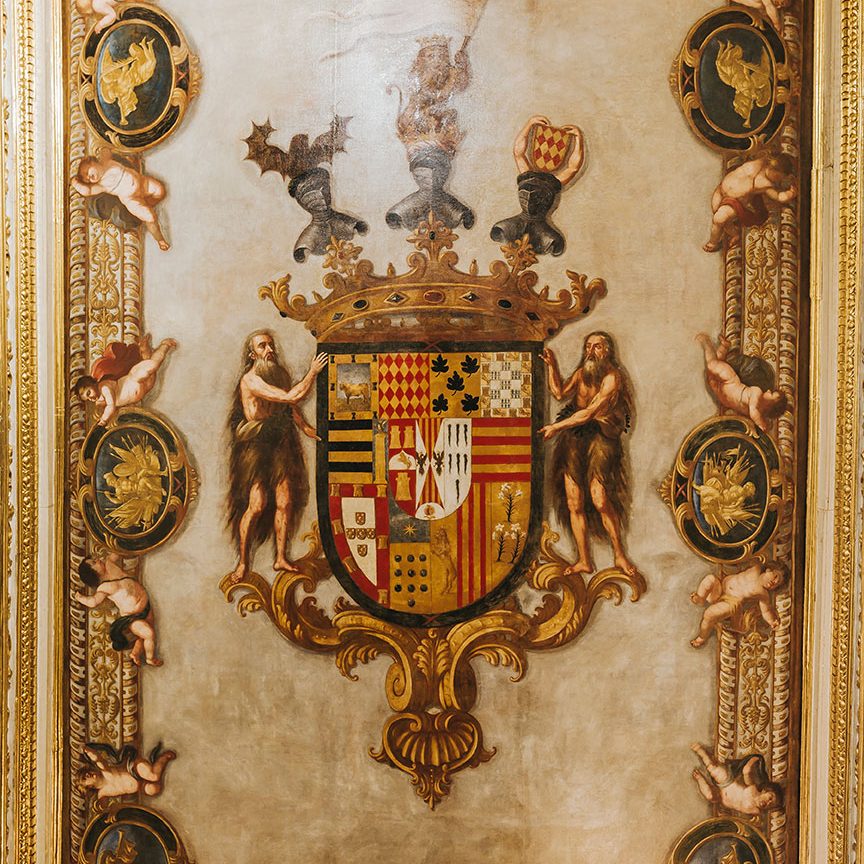
Canvas of the Heraldic Hall
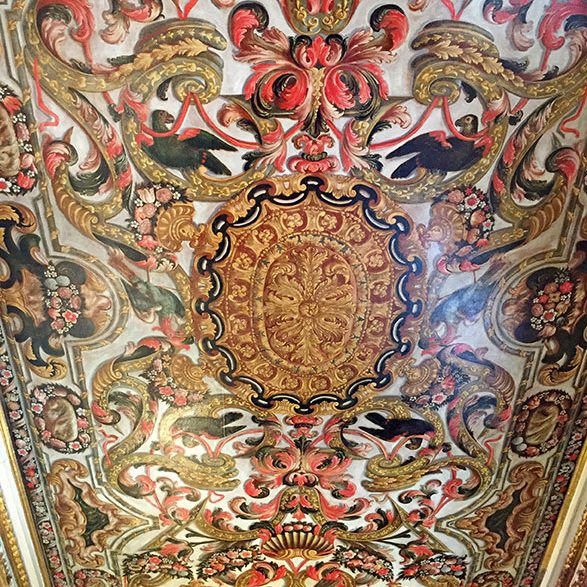
Ornamental Room Canvas
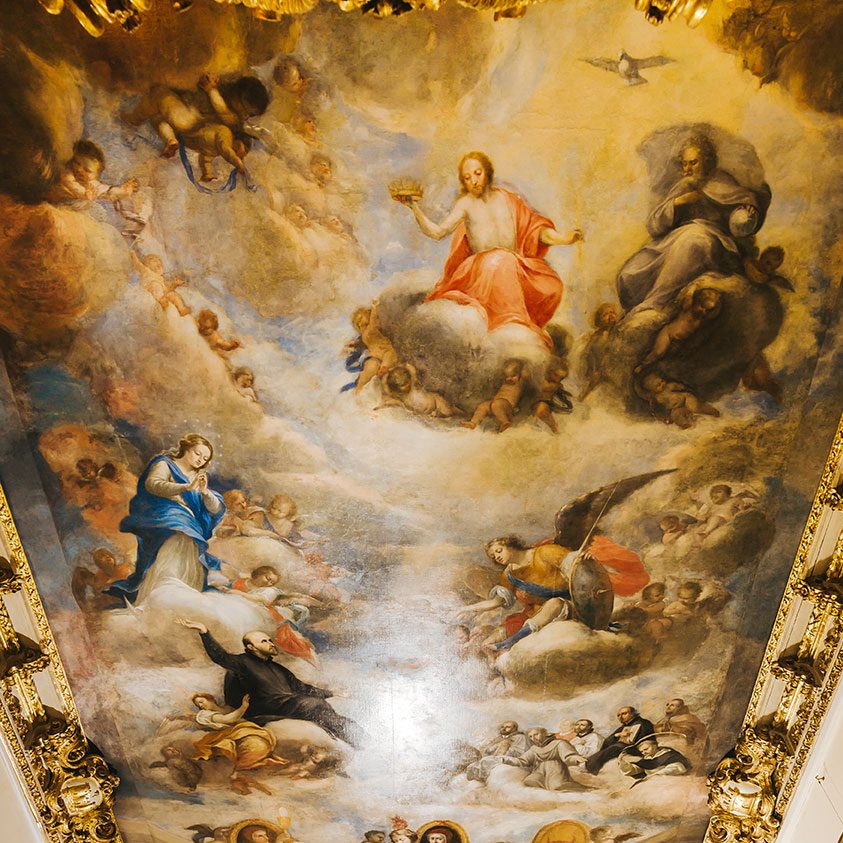
Glorification Hall Canvas
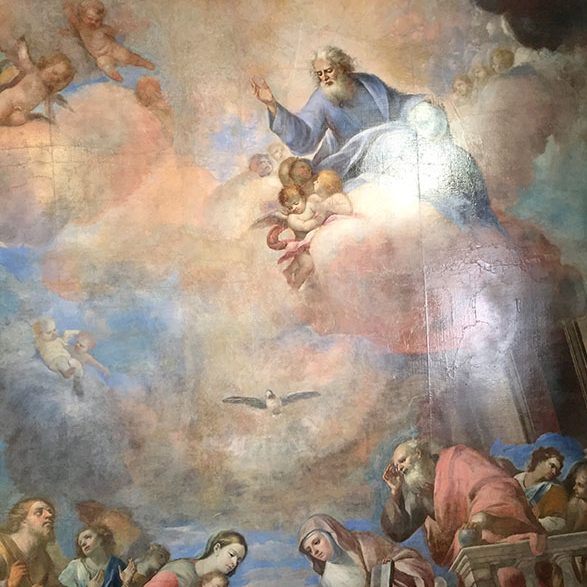
Canvas in the Hall of the Holy Family
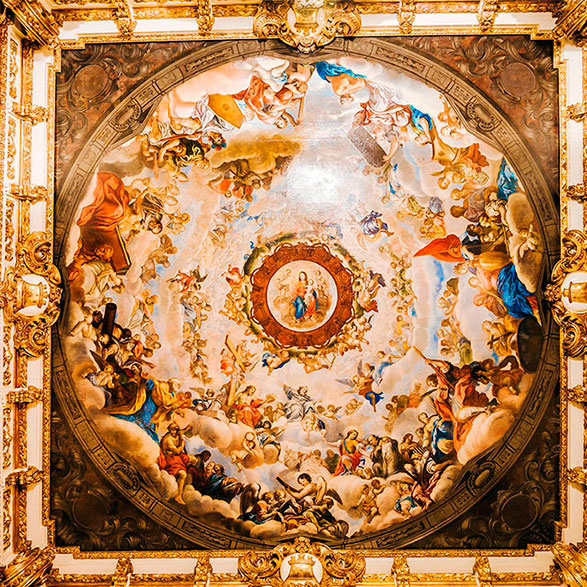
Canvas in the Hall of Heaven and Earth

Canvas of the Heraldic Hall
Canvas of the Heraldic Hall
Among these, we can see the shields of the Enriquez, the Castros of Portugal and the Centelles. To these representations we only need to add the coat of arms of the Benavides of Aragon, a family related to the Borgias by the marriage of the 11th Duke, Ignacio Francis Borja with Rosalea Bernarda de Benavides y Aragón.
It is crested with three half-open visored helmets, a symbol of the Christian knights who fought against the banner of the Crescent Moon. Over the helms there are three other elements: to the dexter (the bearer’s right), is the Rat-Penat, or Bat symbol of Valencia; in the centre, the Ducal Crown with a seated lion holding a flag unfolded; and to the sinister (the bearer’s left) the shield of the town of Oliva, supported by two bare arms.

Ornamental Room Canvas
Ornamental Room Canvas
In the first two rooms, religious images were not chosen for the iconographic programme of these canvases because they were used more for entertainment and festivities. Nevertheless, the pictorial discourse is totally religious in the last three rooms, because they were not used for festive acts, but rather reserved for honouring the figure of the newly canonised Saint Borja.

Glorification Hall Canvas
Glorification Hall Canvas
Above, in the celestial plane, are the three theological virtues, Faith, Charity and Hope, holding three medallions with the portraits of Calixtus III, Alexander VI and the red bull, the emblem of the Borjas.
In the upper section, we can see Francis Borja on a cloud dressed in his Jesuit habit next to a series of highly recognisable saints and beatified persons acting as witnesses to the glorification, and above him, Saint Michael the Archangel, the Immaculate Conception and the Holy Trinity.

Canvas in the Hall of the Holy Family
Canvas in the Hall of the Holy Family
In the first of the two square canvases in the Golden Gallery we can see a representation of the Holy Family. This composition is more balanced and faces the opposite direction compared to the three previous paintings. In the lower section we can see a representation of the earthly origin of Christ, observed from above by the Father.
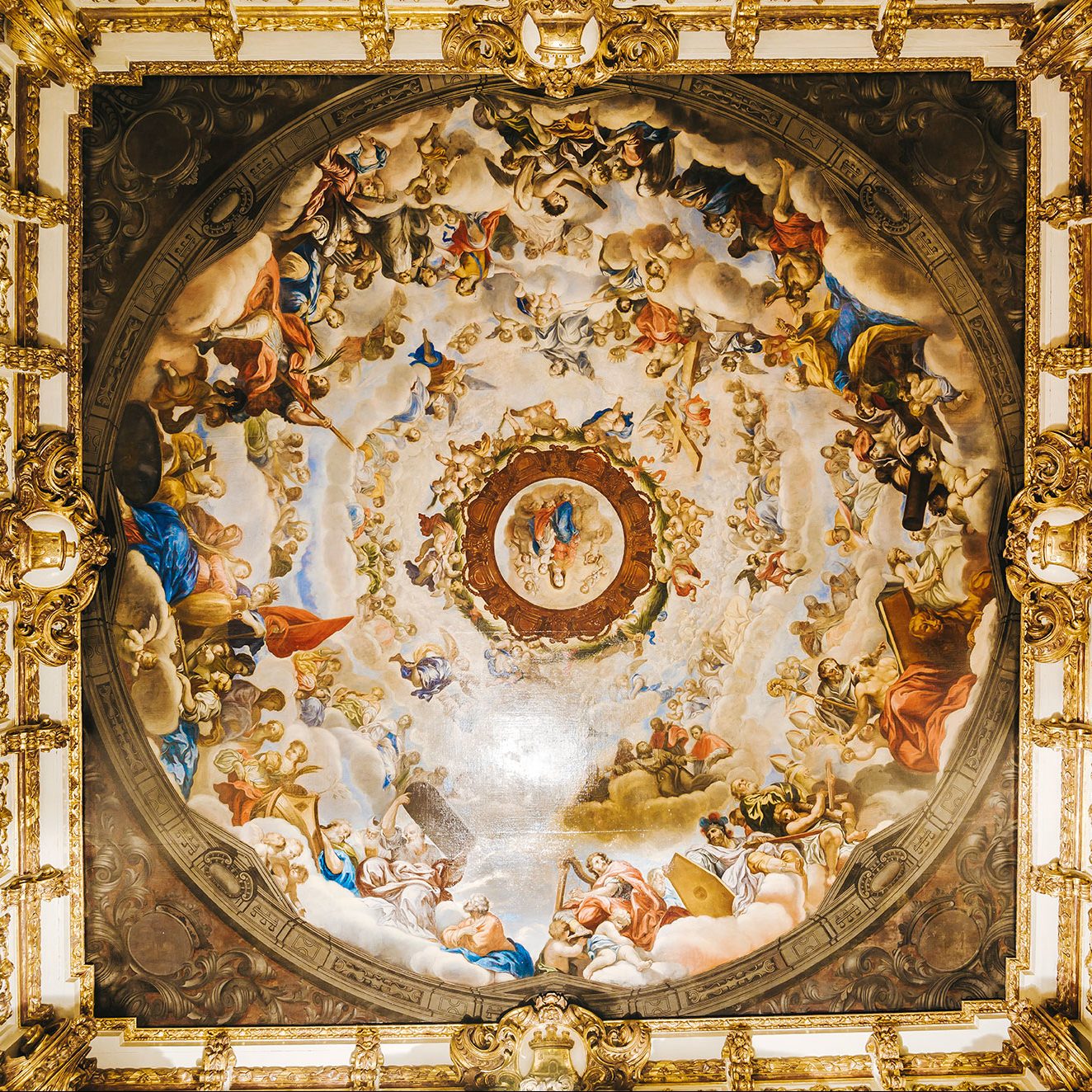
Canvas in the Hall of Heaven and Earth
Canvas in the Hall of Heaven and Earth
In the religious scenes of this gallery, Saint Michael is typically depicted accompanying Saint Francis Borja because he was the former patron of the city of Gandia. Today, the city’s patron is Saint Francis Borja.
PALAU DUCAL DELS BORJA DE GANDIA
C/ Duc Alfons el Vell, 1.
39.966117, -0.180098
46701 Gandia (Valencia) ESPAÑA




